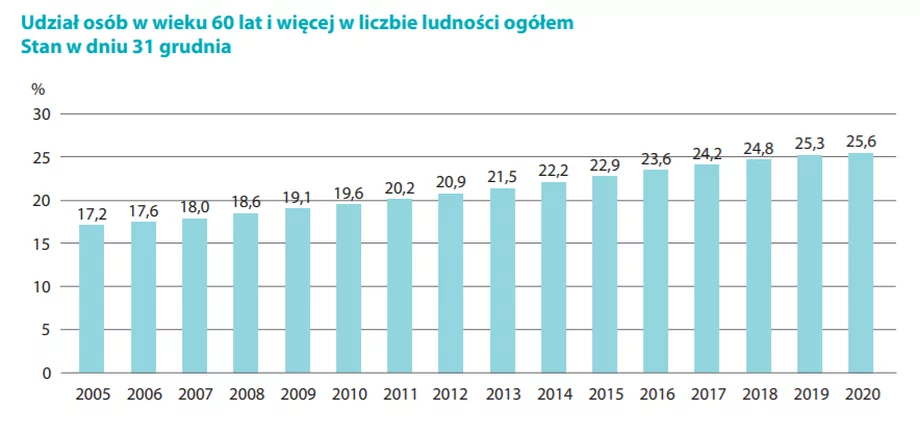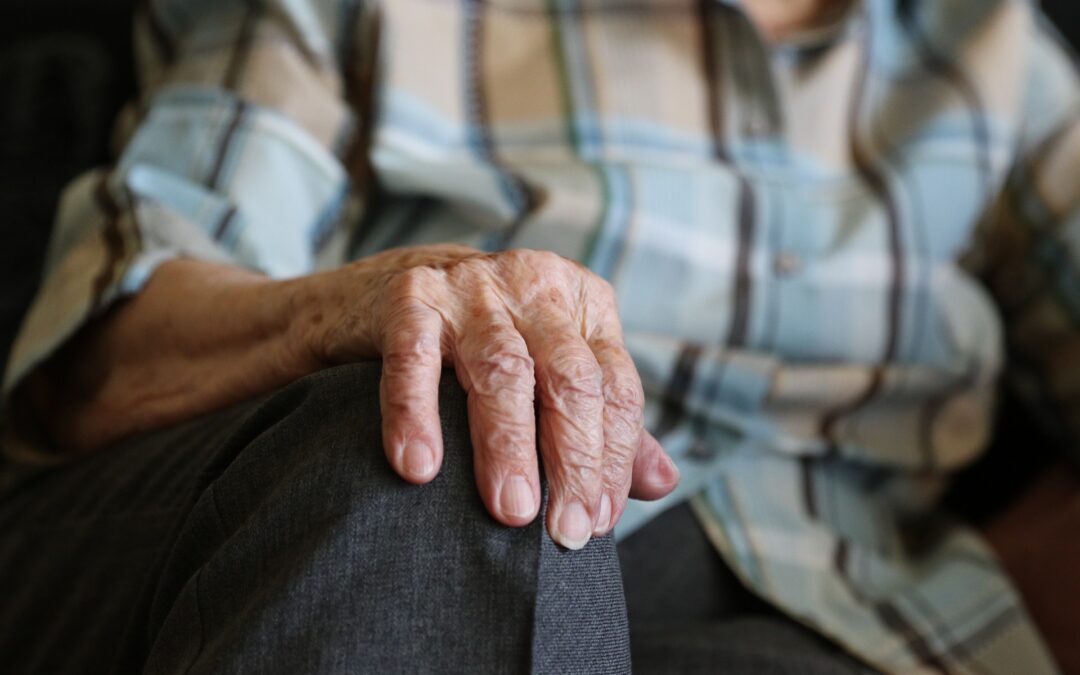Around 40% of Poland’s population is forecast to be aged over 60 by 2050, up from the 25.6% at the end of last year, according to a new report by Statistics Poland (GUS), a state agency.
The analysis also looks at the toll of the pandemic on elderly people, including limited access to healthcare and growing numbers living in extreme poverty.
Nowa publikacja #GUS zawiera informacje o różnych
aspektach życia seniorów w 2020 r. #COVID19 sprawiła, że #osobystarsze znalazły się w trudnej sytuacji, z uwagi na większą podatność na wirusa, poważniejszy przebieg choroby i wyższą śmiertelność.
Więcej: https://t.co/4SVELMZgHW pic.twitter.com/rfm3AHtpj5— GUS (@GUS_STAT) December 29, 2021
By the end of 2020, there were 9.8 million people aged 60 years and above in Poland, which was 1% more than in 2019. GUS forecasts that the figure will continue to rise, reaching 10.8 million people in 2030 and 13.7 million in 2050.
The growing proportion of elderly citizens presents a problem for the country’s pensions scheme. There are currently 2.66 working-age citizens per retiree in Poland, down from 2.74 in 2019, reports Business Insider Polska, and that number is set to shrink much further.
The proportion of elderly people is higher in cities (27.8%) relative to rural areas (22.3%). The highest share of those aged 60 plus is currently living in Łódź province (28%), while the lowest is in Małopolskie province (23.8%).
 Share of people aged 60 years plus in the total population. Source: GUS
Share of people aged 60 years plus in the total population. Source: GUS
The report finds that 9.1% of elderly deaths in 2020 were caused by Covid. But the pandemic has also raised mortality rates indirectly by limiting the access of the elderly to healthcare. Around 10% fewer medical consultations were held for those aged 65 years and over.
Poland last year recorded the highest excess death rate in the European Union, with many of the deaths caused not directly by COVID-19, but by limited access to healthcare.
Last year 412,800 people aged 60 years and over died in Poland, which constituted 86.5% of all deaths. However, this did not stop the trend of an ageing population as the birth rate also fell by 5.2% last year relative to 2019, or by 19,700 births to 355,300.
The proportion of elderly people living in extreme poverty has also increased by 0.6 percentage points to 4.3% of their age segment. The average monthly pension paid by ZUS, the state social insurance body, stood at 2,455 zloty, marking a 5.5% increase from 2019.
Over 85% of those aged above 60 years were no longer active in the labour force last year, meaning that they were living off their savings, pensions or other forms of support. Of the 1.4 million who were still working, 38.7% already had the right to collect a pension.
Almost 73,000 elderly people received permanent benefits, which are paid to the poorest people. Of these, 94.6% were living alone, reports Business Insider Polska.
Main image credit: beejees/Pixabay (under Pixabay License)

Maria Wilczek is deputy editor of Notes from Poland. She is a regular writer for The Times, The Economist and Al Jazeera English, and has also featured in Foreign Policy, Politico Europe, The Spectator and Gazeta Wyborcza.




















